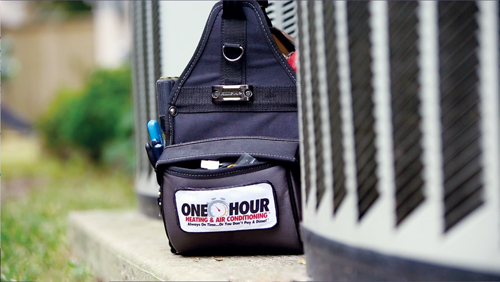What Should Routine AC Maintenance Include?
Here in sultry, sun-drenched Miami, we demand a lot of our air conditioning systems. Not only do many units run day and night, but they often do so for half the year or more. You don’t have to be an engineer to recognize such a heavy workload can be punishing on equipment that isn’t cared for properly. Consequently, regular preventive maintenance is essential to get the best out of your cooling system.
Not sure where to start? Don’t sweat it! While there’s no substitute for annual tune-ups performed by qualified professionals, there’s still plenty of maintenance you can do yourself. We’ve got the full breakdown, including all the most essential tasks to ensure maximum performance and reliability.
Check Up on Air Filters and Vents
When it comes to home climate control, airflow is king. If your AC unit can’t circulate air freely and evenly throughout the house, your comfort is bound to suffer — and so is your wallet. A dirty air filter alone can easily knock between 5% and 15% off your system’s efficiency, making it work harder to keep you less comfortable.
To remedy this, just pop your HVAC filter out once a month and hold it up to a bright light. If it looks reasonably clean, you’re good to go! If it’s dirty enough to block the light, the next step depends on the type of filter. Washable models can be cleaned using a mix of water and soap or white vinegar, but disposable filters should be thrown out and replaced.
While you’re at it, why not do a little reconnaissance to check for another common airflow problem? Scout out the supply and return vents around the house and check for furniture or other possible obstructions. The more room there is around each vent, the easier air will flow. If the vents look dusty, turn off the AC and grab your vacuum. Remove the dirty covers and use a hose attachment to suck up loose debris. Finish with a damp cloth or soft brush to clean up anything that remains.
Clean Condenser and Evaporator Coils
Arguably the two most critical components of an AC system, the evaporator and condenser coils are where heat energy is actually absorbed and released. Both contain a series of metal tubes and fins that facilitate this heat exchange — a process that becomes far less efficient when the coils are dirty. The condenser coil is inside the outdoor AC unit and is typically cleaned with a soft brush and a garden hose. The evaporator coil is most often located in the attic, and it’s cleaned using a specialized foaming cleaner. For safety, power to the AC system should always be shut off at the breaker panel before proceeding.
If you’re particularly DIY-inclined, this is another task you may be tempted to check off on your own. While there are benefits to doing so, there are also potential risks to keep in mind. The fins on AC coils are surprisingly delicate and easy to deform if you’re not careful. With the combination of water and high-voltage components, electrical shocks are also a clear hazard should you forget to kill the power.
Flush Out the Condensate Drain Line
High humidity is a fact of life here in South Florida. That’s hardly breaking news, but it does present an unexpected challenge. Our AC units have to work overtime on dehumidification, continuously pulling moisture from the air in the form of condensation. All that water has to go somewhere, which is why keeping your condensate drain line clear is a top priority.
If this vital drain gets clogged up with dirt or organic growth, condensation can quickly fill up the AC drain pan. At best, this may activate a safety switch and shut down your system. At worst, it can cause the pan to overflow and spill out into your home, resulting in water damage and a favorable environment for mold.
The good news? You can greatly reduce the risk of troublesome clogs in a few simple steps. First, check for standing water or visible debris in the drain pan. If the drain runs outdoors, make sure the outlet is clean and there are no obstructions nearby. Next, find the drain line’s access point and remove the cap. Carefully pour in one cup of distilled vinegar or diluted bleach solution and let it sit for half an hour. Follow up with clean water to flush out any remaining gunk and ensure the line flows smoothly.
Schedule a Comprehensive Maintenance Tune-Up
We love a do-it-yourselfer, but some jobs are better left to the professionals. Simply put, qualified HVAC technicians are trained and equipped to safely service all parts of your air conditioning system, promoting more efficient performance and helping you avoid costly repair calls. More to the point, most manufacturer warranties require annual service visits to maintain coverage. So, what do technicians do during these visits? Common tasks include:
- Conducting a full visual inspection
- Cleaning and lubricating moving parts
- Checking and tightening electrical connections
- Testing sensors, controls and components
- Calibrating thermostat settings
- Measuring refrigerant pressures
- Checking and adjusting airflow
Like most things in life, air conditioning troubles are much easier to prevent than to solve after the fact. It’s never too late to start giving your AC unit the care and attention it deserves, so why wait any longer? Call One Hour Air Conditioning & Heating in Miami, FL for professional AC maintenance on your schedule. From Doral to Homestead and beyond, we’re on time or you don’t pay a dime!
